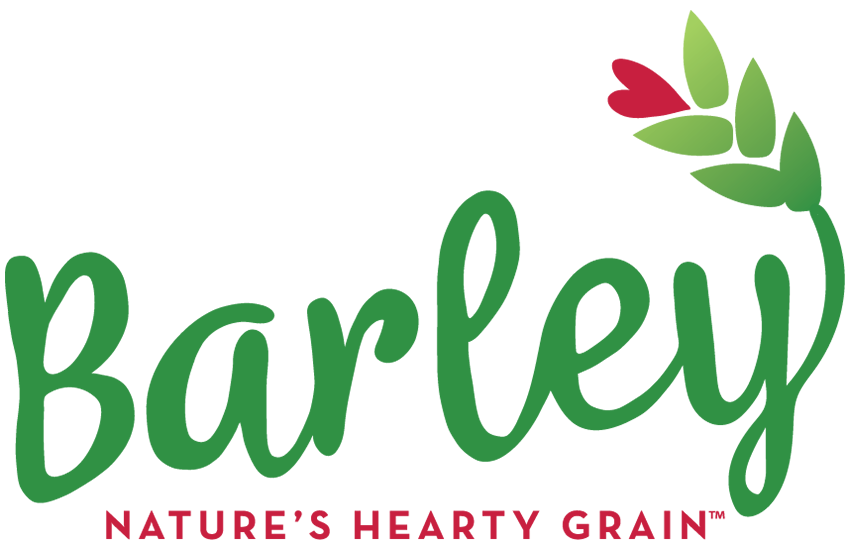By: Caroline Sluyter, Program Director, The Whole Grains Council
When you think of barley, do you picture a big bowl of hearty soup? Does your mental image of barley pretty much end there? You may not be alone, but if your use of barley doesn’t extend beyond your mom’s beef and barley recipe, you’re seriously missing out.
When you think of barley, do you picture a big bowl of hearty soup? Does your mental image of barley pretty much end there? You may not be alone, but if your use of barley doesn’t extend beyond your mom’s beef and barley recipe, you’re seriously missing out. We recently spoke with two of the folks behind the Eat Barley campaign and learned that myths and misconceptions about barley seem to abound. So today, with help from Liz Wilder and Laura Wilder of Eat Barley and the Idaho Barley Commission, we’d like to set the record straight.
An Old Grain Meets New Needs
Using traditional cross-breeding methods, the barley we eat today has been bred to optimize many of the taste and health qualities that consumers are seeking from their grain. For instance, today’s barley has a higher beta-glucan content than older barley varieties. Beta glucans are dietary fibers that offer significant health benefits, promoting gut health, lowering blood cholesterol levels, and improving glucose metabolism. Barley and oats are two of the best sources of beta glucans, and barley has them in abundance – 1 cup of barley contains 2.5 grams of beta glucans. Today’s barley is also chock full of polyphenols, compounds found in many plant foods, which have anti-inflammatory properties.
Traditional barley varieties are somewhat notorious for their thick, stubborn hull. Most grains grow inside hulls, which protect them from moisture and pest predation, but barley hulls are perhaps the most difficult to peel away from their kernels, making it hard to keep the grain’s bran layer fully intact during the hulling process. Relatively recent developments in breeding have led to the introduction of hulless, or naked varieties of barley which grow without that thick suit of armor. And that brings us to our next fact about barley…

There Are So Many Ways to Purchase Barley – and Many of Them Are Whole Grain
Liz and Laura told us many people don’t know that whole grain barley exists. While it’s true that the pearled barley many people grew up eating is not whole grain, there are lots of ways to buy whole grain barley these days. Here’s a guide to the types you may see.
- Hulless Barley is that “naked” barley we were just talking about that grows without a hull. This variety requires extremely minimal processing and does not get polished. It’s safe to assume hulless barley is always whole grain.
- Hulled Barley has been lightly processed and polished to remove its tough outer hull, but its bran remains almost entirely intact and therefore it still counts as a whole grain.
- Pot Barley has been processed and polished more than hulled barley, but less than pearled barley. It’s not as common in the US, but you might see reference to it in old recipes or in recipes from Europe or Australia. It doesn’t count as a whole grain.
- Pearled Barley isn’t a whole grain since it’s undergone significant polishing to remove all or most of its bran layer. However, unlike other grains which lose most of their nutrients and fiber in the process of refining, the nutrients in barley are more evenly distributed, which means that even pearled barley is a healthy choice (despite not being whole).
- Barley Flakes are similar to rolled oats and can be cooked into porridge or used in granola or bread. Barley flakes are whole grain as long as they were flaked and rolled using hulled or hulless varieties.
- Barley Grits are made by finely chopping barley kernels into pieces. Grits can be cooked into porridge or polenta. Barley grits can be either whole grain or refined.
- Barley Flour is perfect for use in baking. Barley flour can be used as a substitute for 25% of the wheat flour in most recipes without requiring other adjustments. Barley flour can be either whole grain or refined.
Depending on the size of the grain selection at your grocery store or natural foods store, you may be able to find these different grain types locally, or they can be purchased online from some of our member companies.

It’s Not Just for Soup!
Cooked barley is pleasantly firm and chewy, making it the perfect base for a grain salad, a tasty pilaf, or a rice substitute in curries or stir-fries. “Barley has a really nutty flavor, but also blends well with other flavors, adapting and thriving in most contexts,” Liz told us. She loves using barley in a mushroom risotto with white wine or in a heavy, tomato-based dish. She also highly recommends cooking barley flakes just as you would oatmeal. “It’s a great way to get used to the flavor and they hold their structure better than oats, so the texture is really nice.”
Laura loves hulless barley, though she recognizes that its cook time (45-60 minutes) can be a barrier for some. She recommends batch cooking and then storing in the refrigerator for a few days or freezing for future use. Using an Instant Pot can also speed up the cook time significantly.
If you’re looking for a few inspirational barley recipes to get you going, here are two of our favorites:


